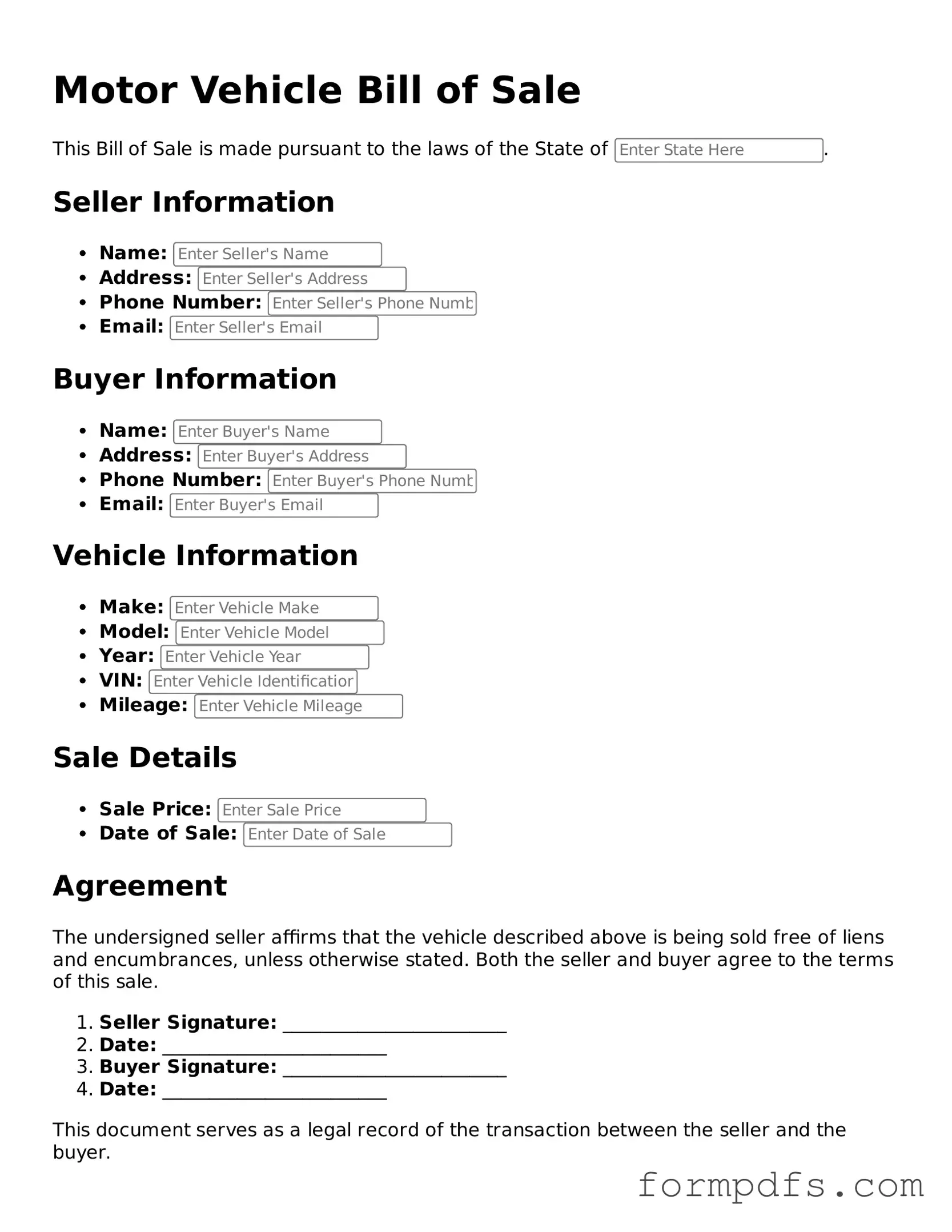What is a Motor Vehicle Bill of Sale?
A Motor Vehicle Bill of Sale is a legal document that records the transfer of ownership of a vehicle from one party to another. This form serves as proof of the transaction and includes important details such as the vehicle's make, model, year, VIN (Vehicle Identification Number), and the purchase price. It is essential for both buyers and sellers to have this document to protect their interests during the sale.
Why do I need a Bill of Sale for my vehicle?
Having a Bill of Sale is crucial for several reasons. It provides a clear record of the transaction, which can help resolve disputes if they arise in the future. For the buyer, it serves as proof of ownership and may be required when registering the vehicle with the Department of Motor Vehicles (DMV). For the seller, it protects against liability for any issues that may arise after the sale.
What information should be included in a Motor Vehicle Bill of Sale?
A comprehensive Bill of Sale should include the following details: the names and addresses of both the buyer and seller, the vehicle's make, model, year, and VIN, the sale price, the date of the transaction, and any conditions of the sale. Additionally, both parties should sign the document to validate the agreement.
Do I need to have the Bill of Sale notarized?
Notarization is not typically required for a Bill of Sale in most states, but it can add an extra layer of protection. Having the document notarized can help verify the identities of the parties involved and the authenticity of their signatures. Check your state’s requirements to determine if notarization is necessary.
Can I use a Bill of Sale for a vehicle that I received as a gift?
Yes, a Bill of Sale can be used for a gifted vehicle. In this case, the document should clearly state that the vehicle is being transferred as a gift, and it should include the same essential details as a standard sale. This helps clarify the transaction for tax purposes and future ownership verification.
What happens if I lose the Bill of Sale?
If you lose your Bill of Sale, it can create challenges, particularly when registering the vehicle or proving ownership. It’s advisable to keep multiple copies in a safe place. If you cannot locate the original, you may need to create a new Bill of Sale and have both parties sign it again. Alternatively, you can request a duplicate from the seller if they retained a copy.
Is a Bill of Sale the same as a title?
No, a Bill of Sale is not the same as a title. The title is the official document that proves ownership of the vehicle and is issued by the state. The Bill of Sale is a record of the transaction and may be required to complete the title transfer process. Both documents are important for a successful vehicle sale.
How do I fill out a Motor Vehicle Bill of Sale?
Filling out a Bill of Sale is straightforward. Start by entering the date of the transaction, followed by the names and addresses of both the buyer and seller. Next, include the vehicle details: make, model, year, and VIN. Specify the sale price and any terms or conditions related to the sale. Finally, both parties should sign and date the document. Ensure that each party keeps a copy for their records.
Where can I obtain a Motor Vehicle Bill of Sale form?
You can find a Motor Vehicle Bill of Sale form through various sources. Many state DMV websites provide downloadable forms that meet local requirements. Additionally, legal form websites and office supply stores often offer templates. Always ensure that the form you choose is compliant with your state’s regulations to avoid any issues during the sale.
